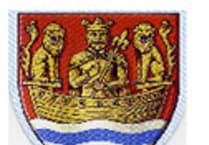South Hams District Council is ramping up efforts to help tackle water pollution with a monitoring project, launched Monday 18 August.
Cutting-edge kit from local marine tech firm Teledyne Valeport will enable the public to see real-time data on the quality of water in key areas across the district for the very first time.
The project aims to make water quality data more accessible – so communities, experts and agencies can better understand what’s happening in our rivers and estuaries and take action together.
While the Council is only responsible for the water quality regulations at designated bathing waters, it's committed to working with others to improve water quality across the board.
Councillors and project partners gathered on 14 August to mark the handover of the new monitoring kit from Teledyne to the Council. Once installed, the sensors will run continuously and for the first time, real-time data will be shared publicly via an online dashboard launching in late 2025.
Councillor John McKay, Executive Member for Climate Change and Biodiversity, at South Hams District Council, said: “This is a brilliant example of what can happen when communities, researchers and businesses join forces to tackle real problems.”
The project is government funded and being delivered in partnership with Innovate UK, the University of Plymouth and Teledyne Valeport. It also has support from the Environment Agency and local harbourmasters.
Amy Thompson, Teledyne Valeport Innovation & Product Manager, said: “At a time when concerns about water quality have understandably come to the forefront, we’re pleased to be working alongside South Hams District Council on this project.
“This project is utilising our latest sensors, all designed and manufactured at our Totnes facility. It’s incredibly rewarding to see our instruments that are used worldwide being applied to such an important local initiative."
Experts from the University of Plymouth will be supporting the deployment of the sensors and then working with the project partners to analyse the data generated once it becomes available.
.png?trim=0,0,0,0&width=752&height=532&crop=752:532)




Comments
This article has no comments yet. Be the first to leave a comment.